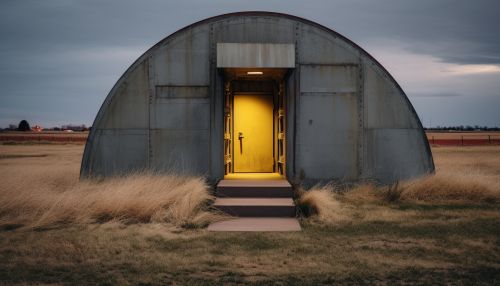Tornado preparedness
Introduction
A tornado is a rapidly rotating column of air that is in contact with both the surface of the Earth and a cumulonimbus cloud or, in rare cases, the base of a cumulus cloud. Tornadoes come in many sizes but are typically in the form of a visible condensation funnel, whose narrow end touches the Earth and is often encircled by a cloud of debris and dust. Tornado preparedness refers to the safety measures and strategies that can be implemented to prepare for, survive, and recover from a tornado event.
Understanding Tornadoes
Tornadoes are one of the most powerful and destructive types of weather phenomena. They are capable of causing extensive damage to structures and landscapes, and can result in loss of life. Understanding the nature of tornadoes, their causes, and their typical behaviors can be crucial in preparing for their occurrence.
Formation
Tornadoes form from severe thunderstorms in warm, moist, unstable air along and ahead of cold fronts. Such thunderstorms also have a continuous supply of updrafts that pull in warm, moist air to fuel the storm. A change in wind direction and an increase in wind speed with increasing height creates an invisible, horizontal spinning effect in the lower atmosphere. Rising air within the thunderstorm updraft tilts the rotating air from horizontal to vertical, and an area of rotation, 2-6 miles wide, now extends through much of the storm. Most strong to violent tornadoes form within this area of strong rotation.
Classification
Tornadoes are classified according to the Enhanced Fujita scale, which rates them based on the damage they cause to human-built structures and vegetation. The scale ranges from EF0, which causes light damage, to EF5, which causes incredible damage.
Tornado Preparedness
Tornado preparedness involves a combination of learning about tornadoes, making a plan, and assembling a disaster supplies kit. These steps can help individuals and communities reduce the risk of injury and property damage during a tornado.
Education
Understanding tornadoes and their dangers is the first step in tornado preparedness. This includes learning about the risk of tornadoes in your area, understanding the signs of a tornado, and knowing the difference between a tornado watch (tornadoes are possible) and a tornado warning (a tornado has been sighted or indicated by weather radar).
Planning
Planning for a tornado involves identifying safe areas of your home or place of work, discussing tornado safety with family members or coworkers, and knowing how to communicate during and after a tornado. A safe area could be a small, windowless interior room on the lowest level of your home, such as a basement, storm cellar, or even a bathroom or closet.
Disaster Supplies Kit
A disaster supplies kit is a collection of basic items that could be needed in the event of a disaster. For tornado preparedness, this kit might include a first aid kit, essential medicines, canned food and a can opener, at least three gallons of water per person, protective clothing, bedding or sleeping bags, a battery-powered radio, flashlight, and extra batteries, and special items for infants, elderly, or disabled family members.
Tornado Safety
During a tornado, it's important to move to a pre-designated shelter area such as a basement, storm cellar or the lowest building level. If there is no basement, go to the center of a small interior room on the lowest level (closet, interior hallway) away from corners, windows, doors, and outside walls.


Recovery
After a tornado, it's important to stay informed about what's happening and to follow the advice of local officials. Check for injuries and provide first aid if necessary. Be careful when entering a damaged building, and use battery-powered lighting if possible rather than candles or torches. If your home is damaged, contact your insurance company as soon as possible.
